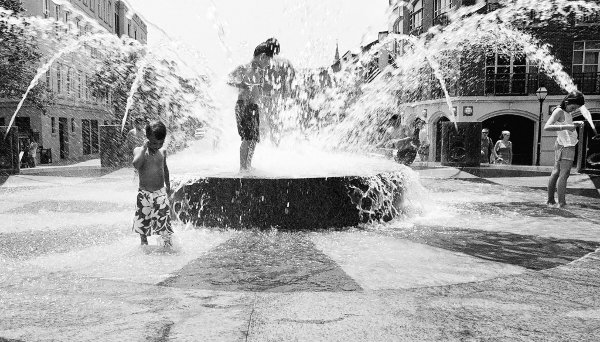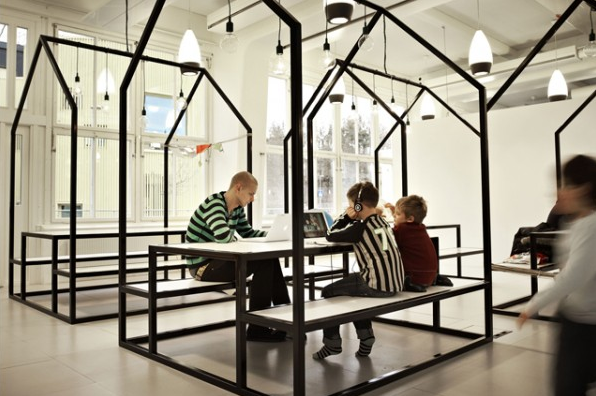
In the planning world, water is an asset. A public fountain or interactive water feature comes with a frequently-kept promise of bare feet, pennies, and photographs. Formal or informal, the joy on the faces of those playing in a spouting fire hydrant is the same as those playing in a municipally-owned fountain. Even without the barefoot interaction, waterfront property is of the highest value along the coast. Those of us in coastal towns like our water. We like our seafood, we like our ocean, and I’m sure we like our mountains too – but not enough to move to Montana.
Baltimore is undeniably fortunate to have the potential for significant waterfront engagement. The waterfront promenade, snaking seven miles along the Inner Harbor, is a valiant attempt to further the relationship between the city resident and the water, but each town has its challenges, and when it comes to waterfront property Baltimore is no exception.
Cities can’t just put a pathway around a waterfront and call it an asset – there’s more to it than that. I rarely frequent the Inner Harbor. If and when I do, I park in Little Italy and cross President Street on foot, en route to H&M or Urban Outfitters. I’ll park on the east side of I-83 for a concert in Rams Head or a basketball game at Lucky’s. The Inner Harbor is not my neighborhood, but then again, is it anyone’s?
This past weekend I joined three colleagues for a walk around the promenade. Photographing light fixtures, seating, noting the scale of public art and the absence of benches in places we wanted to sit, we took our cameras and notebooks and walked – noting what worked, what didn’t, and what was somewhat nonsensical.
“Wait, there are two significant service entrances for two neighboring restaurants?”
“Hold on, delivery trucks turn around here? Where the bridge dumps pedestrians directly onto the promenade?”
“Why doesn’t anyone walk back here? Why does this feel like a service entrance?”
During our walk, a colleague noted that areas in the harbor are always busy.
“People are always climbing on these,” he noted, while pointing to the upside down kid-scale arches outside the information pavilion.
‘Yes,’ I responded ‘but they’re never the same people.’
At present, the Inner Harbor is for tourists; the people crawling on this upturned artwork will do so once or twice before jumping on a bus or plane, preserving the novelty of our harbor place in their temporary visitor minds. So how can we change this? How can we make an area crafted for tourists more frequented by residents, and can there be that type of overlap?
Here’s how not to do it: Puerto Madero is an upscale waterfront area in Buenos Aires that caters to residents of a higher economic divide. The neighborhood lies on the outskirts of the city, and it is no accident the neighborhood remains disconnected from the city’s public transit network. Yes, there are restaurants and apartments, but you have to pay to get there, and you have to pay to stay there. While it is certainly public land, the definition of ‘public’ is “upper class individuals.”
Imagine if Baltimore were like that: you could only get to the waterfront via taxi or personal car. Upon arrival you wouldn’t find anything to do but eat or drink in an overpriced outdoor restaurant. There are no tourist attractions or museums, no sand volleyball courts, no connected running path. What results is a beautiful waterfront space, intentionally designed to serve the elite, and not considered a formal part of the city – it may as well be considered a nearby waterfront suburb.
Choice American cities like Boston, Seattle, and New York have found their waterfronts hidden by highways and traffic, restricting the waterfront experience to dashboard and window views while speeding from place to place or sitting in traffic between. In this sense, Baltimore is fortunate; having preserved the waterfront path for foot traffic and bicycles, and allowing access to the area by way of public transit and private car. The so-called infrastructure of a waterfront is present. What lacks are the soft costs and identity. Putting in smart seating, effective lighting, and trashcans must be partnered with a change in mentality. At some point, we need to adopt the harbor as a place for us, the resident, and not simply the place to take our out-of -towner.




